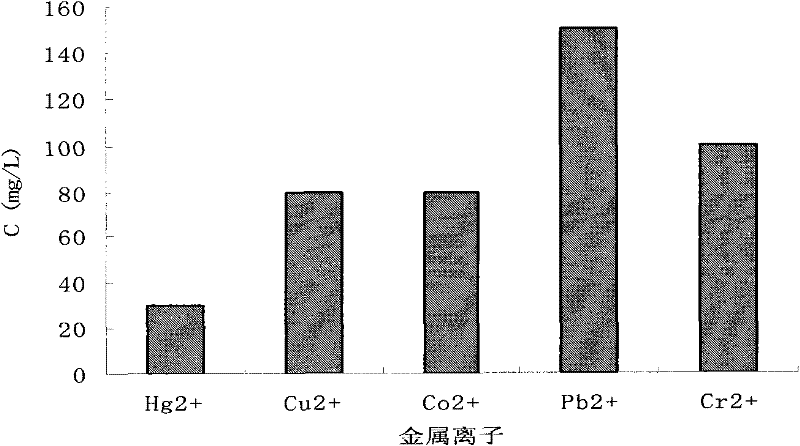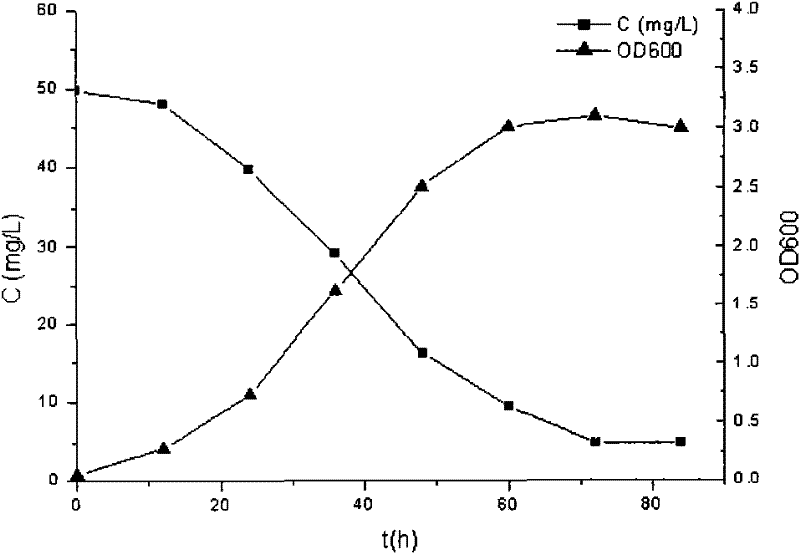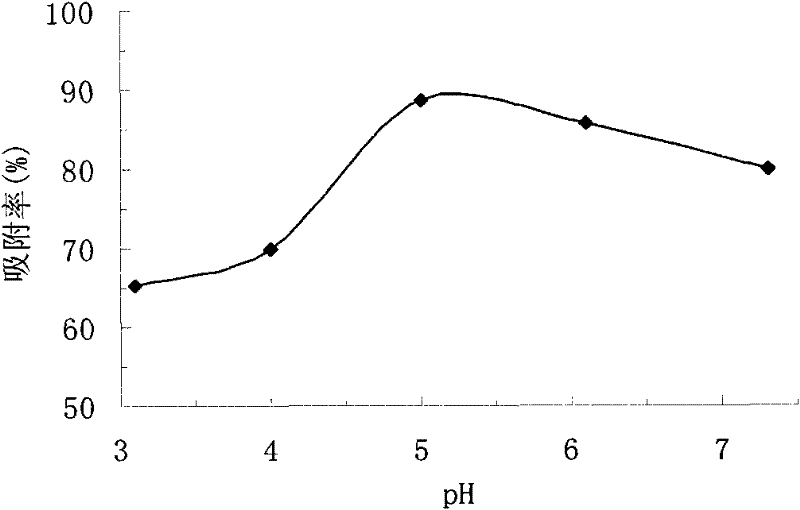Application of radiation resistant bacteria in biological treatment of heavy metal ions
A heavy metal ion, radiation-resistant technology, used in biological water/sewage treatment, microorganism-based methods, bacteria, etc., can solve problems such as high operating costs, secondary pollution, and low removal rates
- Summary
- Abstract
- Description
- Claims
- Application Information
AI Technical Summary
Problems solved by technology
Method used
Image
Examples
Embodiment 1
[0019] Example 1: Liquid culture of strain Deinococcus wushiensis CGMCC No. 1.8884
[0020] The activated strain Deinococcus wushiensis of the present invention was inoculated into a seed test tube containing 5ml of TGY liquid medium, cultivated at 30°C and shaken at 200rpm for 36 hours, and then inoculated into a TGY liquid fermentation flask at 2% of the inoculum (filling amount It is a 500ml Erlenmeyer flask with 80ml TGY liquid medium), cultured at 30°C, shaking at 220rpm for 60h.
[0021] After the above-mentioned culture, the maximum concentration of bacteria can reach 4.51 OD / ml (600nm). The culture was centrifuged at 8000rpm for 3min, the supernatant was discarded, and the bacteria were collected. The wet weight of the bacteria could reach 5.2g / L.
Embodiment 2
[0022] Example 2: Strain Deinococcus wushiensis CGMCC No. 1.8884 heavy metal resistance
[0023] The activated strain of the present invention, Deinococcus wushiensis, was inoculated into a seed test tube containing 5ml of TGY liquid medium, cultured at 30°C and shaken at 200rpm for 36 hours, and then inoculated with 2% of the inoculum amount in different concentrations of Hg. 2+ , Cu 2+ , Co 2+ , Pb 2+ , Cr 2+ In a TGY liquid fermentation flask (a 500ml triangular bottle with 80ml TGY liquid medium), culture at 30°C, shaking at 220 rpm for 72 hours, and observe the growth of the bacteria. See attached for results figure 1 , By the attachment figure 1 It can be seen that the patent strain Deinococcus wushiensis is resistant to a variety of metals, among which Pb 2+ , Cr 2+ The maximum tolerance concentration (100mg / L) Cu 2+ , Co 2+ Second (80mg / L).
Embodiment 3
[0024] Example 3: The strain Deinococcus wushiensis CGMCC No. 1.8884 is in different Co 2+ Growth characteristics at different concentrations
[0025] The activated strain Deinococcus wushiensis of the present invention was inoculated into a seed test tube containing 5ml of TGY liquid medium, cultivated at 30°C and shaken at 200rpm for 36h, and then inoculated at 2% of the inoculum to contain 0, 20, 50, and 80 mg. / L Co 2+ In the TGY liquid fermentation bottle (the filling amount is 500ml triangular bottle with 80ml TGY liquid medium), cultivate at 30℃, shake culture at 220rpm for 120h, and regularly sample every 12h to determine the OD value of the bacteria, and observe the growth of the bacteria. The results show that the low concentration of Co 2+ ( figure 2 .
[0026] Table 1 Different concentrations of Co 2+ Effect on strain growth
[0027]
PUM
| Property | Measurement | Unit |
|---|---|---|
| adsorption | aaaaa | aaaaa |
Abstract
Description
Claims
Application Information
 Login to View More
Login to View More - R&D
- Intellectual Property
- Life Sciences
- Materials
- Tech Scout
- Unparalleled Data Quality
- Higher Quality Content
- 60% Fewer Hallucinations
Browse by: Latest US Patents, China's latest patents, Technical Efficacy Thesaurus, Application Domain, Technology Topic, Popular Technical Reports.
© 2025 PatSnap. All rights reserved.Legal|Privacy policy|Modern Slavery Act Transparency Statement|Sitemap|About US| Contact US: help@patsnap.com



